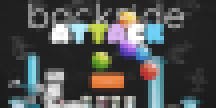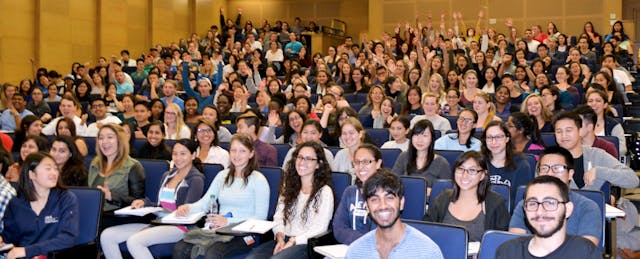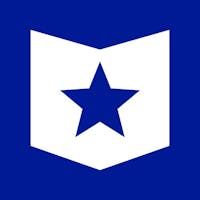If organic chemistry were easy, an old joke goes, it would be called biology.
For some, O-chem is where med school dreams go to die. Many see it as an impossible maze of ceaseless memorization. But Professor Neil Garg looks at organic chemistry and sees a delightful puzzle, an engaging problem to be solved. He finds it endlessly relevant to everyday life, intellectually stimulating, and ultimately fun.
His students at UCLA seem to agree. Getting a seat in Garg’s Chemistry 14D class—even one on the floor in the aisle—is for many undergraduates a cause for a victory dance, no doubt accompanied by the UCLA Eight Clap. Among a slew of teaching awards, Garg has received UCLA’s Eby Award for the Art of Teaching and was named the 2015 California Professor of the Year. He has been named a Master Educator by Course Hero, an education technology company that produced a short film on Garg, who is now one of three finalists for the Robert Foster Cherry Award for Great Teaching bestowed by Baylor University.
Garg is an innovative educator, famous at UCLA for the organic chemistry music video extra-credit assignment he initiated. He also created BACON (Biology and Chemistry Online Notes), a series of online tutorials that interweave organic chemistry, human health, and popular culture. He and his daughters, Elaina, 10, and Kaylie, 5, authored The Organic Coloring Book to introduce younger students to organic chemistry.
Last week, Garg and six of his students launched an app called Backside Attack; it teaches basic concepts of organic chemistry and is available, free, at the App Store. EdSurge talks to Garg about his new game, his favorite music videos, and how to make chemistry fun.
EdSurge: Chemistry 14D is organic chemistry for non-chemistry majors. How did it become a standing-room-only class?
Neil Garg: If I had to distill it down to a few things, it’s making it fun, making it insanely challenging, and providing a lot of support for the students.
How do you make chemistry fun?
One of the simplest things is classroom demonstrations. One of the ones I typically do is the Breathalyzer test. This is technology from the early 1900s. If you’ve been drinking, you can blow into something and there’s a chemical reaction that leads to a color change. That’s the basics behind the technology of a modern Breathalyzer device. We have a way where we can do basically an old-school version of this demo in class and make it fun because students learn about alcohol chemistry.
And then the other thing that my class is most well known for is the music video assignment. As early as 2010, we had students making organic chemistry music videos. Now that kind of thing is a lot more popular across all science fields. But in 2010 that was not the norm.
About 75 percent of the class works on one. The lyrics should contain technical information about structure, reactions, and/or synthesis, and “UCLA” and “14D” should either show up visually or lyrically. They’re supposed to be between two and three minutes long, and students can receive up to 15 extra credit points as determined by the TAs and me.
If you want to watch just one, “Chemistry Jock” is the gold standard. (See below for a complete list of Garg’s Video Hall of Fame). It’s been viewed over 100,000 times.
Okay. And how do you make it "insanely challenging"?
One of the ways we make the class challenging is with “retrosynthetic analysis” problems. To give you a sense of the difficulty, I was not able to solve these types of problems until I was a graduate student at Caltech. However, from Chem 14D, we have seen that sophomores can actually solve these.
What about providing support?
To support my students, my TAs and I both keep regular office hours and virtual office hours—we have an online system from which I can answer questions that come from a submissions queue. I also make an effort to learn student names. I can typically learn more than 200 in a 10-week period. It really helps make the lecture hall feel more like a small classroom.
The video game you’ve been developing sounds like something that also makes chemistry a whole lot more fun. What was the genesis of the Backside Attack app?
About two years ago, I gave a TED talk here at UCLA in which I spoke about how much time our young people spend gaming. I shared a statistic I found somewhere: The world spends 3 billion hours per week playing video games. Around that same time, I was chatting about the idea of video games with a student named Will Parsons. As the class wound down, he said, "If you have any real interest in developing a game or an app or something, I’d be interested."
I said, "Great. Let’s do it."
So I brought in Will and five other students. Maybe two of them knew each other but otherwise they were all strangers to each other. They were a group of creative people. We thought it would be nice to come up with an app that taught some basic concepts of organic chemistry that all students should know. The app is intended for students who are taking sophomore organic chemistry wherever they are in the world.
The name, Backside Attack, comes from real organic chemistry terminology that every student learns for the bimolecular substitution reaction. These reactions occur in three-dimensional space, and all SN2 reactions occur by what’s called backside attack, which means one of the molecules approaches the other one from its backside.

What would you tell other educators who want to create a game to teach their core concepts?
The biggest message is that the students are the innovators. They’re the ones who make it cool.
Educators should engage students in 100 percent of the process, and universities should put money into these kinds of activities—with a call for applications to do something innovative with a group of students. Students are the consumers, if you will, of our educational system. They have a better sense of what students dig these days than faculty do. They’re pretty smart; they’re pretty innovative.
We wanted Back Attack to be sophisticated and these days you can hire people to write the code and to make really cool graphics. So we thought, let’s have the students focus on the flow of the game and what we wanted the game to teach. We chose a relatively simple chemical reaction and, through that, we teach a lot of concepts that go on for the rest of the course.
All of the details of the game play were developed with the students. We met once a week and sat around in my office for an hour with a whiteboard. People just grabbed a marker and came up with another idea, put it on the board and we refined it over time.
Now they’ve all graduated. Some of them are still in the Los Angeles area and some aren’t. When we do have meetings, some people come and some people Skype in. But now those meetings are fewer because we’ve generated all of the content. It’s mostly in the hands of programming.
What makes the game a success?
Typically, I might spend four or five lectures trying to cover [lessons] that I would argue students can learn in a half hour or an hour of playing the game. Our goal is to explore this hypothesis further. We'll see how much the game playing will help students learn the difficult topics in a fast manner. Part of the “slowness” for the lecture format is only having 50 minutes for a lecture period, which typically includes announcements, making sure all students are up to speed, answering questions, and drawing all of the structures. The game avoids all of these.
For us, success is really simple: It’s people using it. If it leads to other people doing innovative projects with their students, that would be a great outcome as well.
Rockin’ the O-Chem
When Neil Garg first threw out the possibility of his students making an organic chemistry music video for extra credit, he had no idea what it would yield. Students rose to the challenge, creating hundreds of videos and elevating the assignment into campus legend. “The average video is usually pretty awesome,” Garg says, “and the best videos are stunning.”
Here are the videos Garg and his TAs have deemed the best of the best:
“Chemistry Jock” (2010) by Yannick Goeb, Justin Banaga, Kimberly Bui
“We in the Lab” (2010) by Jordan Cisneros, Rizwan Jattala, Sarah Sandhaus, Adam Uchimoto
“Let It Be” (2011) by John Boles, Edgar Gonzalez
“We’re Yours” (2011) by Rachel Stafford-Lewis, Myan Pham, Ali Lanewala, Jordan Halfman, 2011
“Hey There Neil Garg” (2012) by Firuz Yumul, Aaron Lalehzarian, Neda Ghassemi, Tianna Wilson
“Payphone” (2012) by Karla Canizales, China Magno, Anuvir Singh
“We’re All Superheroes” (2013) by Winston Chang, Justin Kim, Penelope Kim-Lim, Pope Rodnoi (RLC Productions, featuring Czarina De Jesus)
“Alkenes Are Used for These” (2013) by Jessica Lee, Emily Chuang, Christine Nguyen
“Mashup” (2013) by Sayda Hartoonian, Laura Lorenzana, Michael Sianturi, Andy Truong
“Top Chemists” (2014) by Lawrence Madella, Earl Sy, Samantha David (RLC Productions, featuring Czarina De Jesus)
“Say Alkane” (2014) by Ashley Butler
“I Will Survive” (2015) by Neda Ashtari, Savannah Wiles, Louise Sylvester, Kristen Porisch, 2015
“Riptide” (2015) by Katherine Tabakian
“O-Chem Baby” (2015)—Nikita Shams, Erin Saito, Rose Jarjoura, Danielle Polevoi



